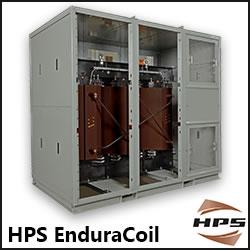Wind Turbine Rotor Blades Powering the Future of Renewable Energy
Wind turbine rotor blades are essential aerodynamic components that transform wind energy into mechanical power, driving electricity generation. Made from advanced materials such as fiberglass, carbon fiber, and epoxy resins, these blades are engineered for strength, flexibility, and lightweight efficiency. The global shift toward renewable energy, supported by government policies and sustainability goals, is fueling innovations in rotor blade design—such as carbon fiber reinforcement, AI-driven modeling, and recyclable thermoplastic composites. These advancements enhance performance, reduce costs, and promote environmental sustainability, making rotor blades a cornerstone of the clean energy revolution.
What Are Wind Turbine Rotor Blades and Why Are They Important?
Wind turbine rotor blades are the massive aerodynamic structures that convert wind energy into mechanical power. These blades are attached to a turbine hub, and as the wind blows, the blades rotate driving the generator that produces electricity. Essentially, rotor blades are the "engines" of wind turbines, determining how efficiently they can capture wind and convert it into usable energy.
Modern blades are designed using advanced composite materials such as fiberglass, carbon fiber, and epoxy resins, which provide the necessary balance of strength, flexibility, and lightweight performance. Their aerodynamic design ensures that even low-speed winds can be harnessed efficiently, making them critical for optimizing power generation, especially in low-wind regions.
The growth of the wind turbine rotor blade market is driven by the global transition toward renewable energy, supported by favourable government policies, sustainability initiatives, and rising energy demand. Technological advancements in blade design, the adoption of lightweight carbon composite materials, and the development of larger, high-efficiency turbines have enhanced performance and reduced operational costs.
Discover More
How the Rotor Blade Market Is Powering the Renewable Energy Boom
The global wind turbine rotor blade market is witnessing significant growth, driven by the accelerating transition toward renewable energy and net-zero carbon targets. As nations invest heavily in sustainable power, wind energy is becoming one of the most economical and scalable solutions.
According to industry analysts, the market for rotor blades is expected to expand rapidly due to:
- Rising global energy demand and pressure to reduce carbon footprints
- Government incentives and renewable energy targets in major economies such as the U.S., China, and the EU
- Technological advancements in blade design, allowing longer, lighter, and more efficient structures
New Technologies Making Blades Stronger and Smarter
Innovation in materials and digital technology is transforming how rotor blades are designed, manufactured, and maintained. Some of the latest trends include:
- Carbon Fiber Reinforcement: Replacing traditional fiberglass with carbon composites to reduce weight and increase stiffness, leading to improved performance and reduced fatigue.
- Additive Manufacturing (3D Printing): Streamlining blade production while reducing material waste and costs.
- Digital Twin and Smart Sensors: Integrating real-time monitoring systems to detect structural stress, wear, or damage before failures occur.
AI-Driven Blade Design: Using artificial intelligence and computational fluid dynamics (CFD) simulations to optimize blade shape for maximum aerodynamic efficiency.
These innovations not only enhance performance but also significantly extend the operational lifespan of blades, reducing maintenance costs and downtime.
The Move Toward Eco-Friendly and Recyclable Blades
While wind power is a clean energy source, the disposal of non-recyclable rotor blades has emerged as a growing concern. Traditional composite materials are difficult to recycle, leading to environmental waste challenges. However, the industry is actively shifting toward sustainable solutions.
Key eco-friendly initiatives include:
- Thermoplastic composites that can be melted and remolded for reuse
- Bio-based resins derived from natural sources like vegetable oils
- Recycling partnerships between manufacturers and waste management companies to repurpose decommissioned blades into construction materials or public infrastructure
Major companies like Siemens Gamesa and Vestas have introduced recyclable blade technologies, setting a precedent for greener manufacturing practices in the wind industry.
Blades of Change for a Greener Tomorrow
The wind turbine rotor blade market stands at the forefront of the global renewable energy revolution. As innovation accelerates and sustainability takes center stage, the next generation of rotor blades will be smarter, stronger, and more eco-friendly than ever before. These advancements not only enhance energy efficiency but also ensure that wind power remains a cornerstone of the world's clean energy future.
With continued investment and research, wind turbine rotor blades will continue to shape a sustainable, low-carbon world one rotation at a time.
Top Manufactures in Wind Turbine Rotor Blade Market
- Acciona S.A.
- Aeris Energy
- EnBW
- Enercon GmbH
- Gamesa Corporation Technology
- Hitachi Power Solutions
- MFG Wind
- Siemens AG
- Suzlon Energy Limited
- Vestas Wind Systems AS
Immediate Delivery Available, Get Full Access| Click Here
About Us
Vision Research Reports is a Canada/India based company and one of the leading providers of strategic market insights. We offer executive-level blueprints of markets and solutions beyond flagship surveys.
Contact Us: sales@visionresearchreports.com
Featured Product

